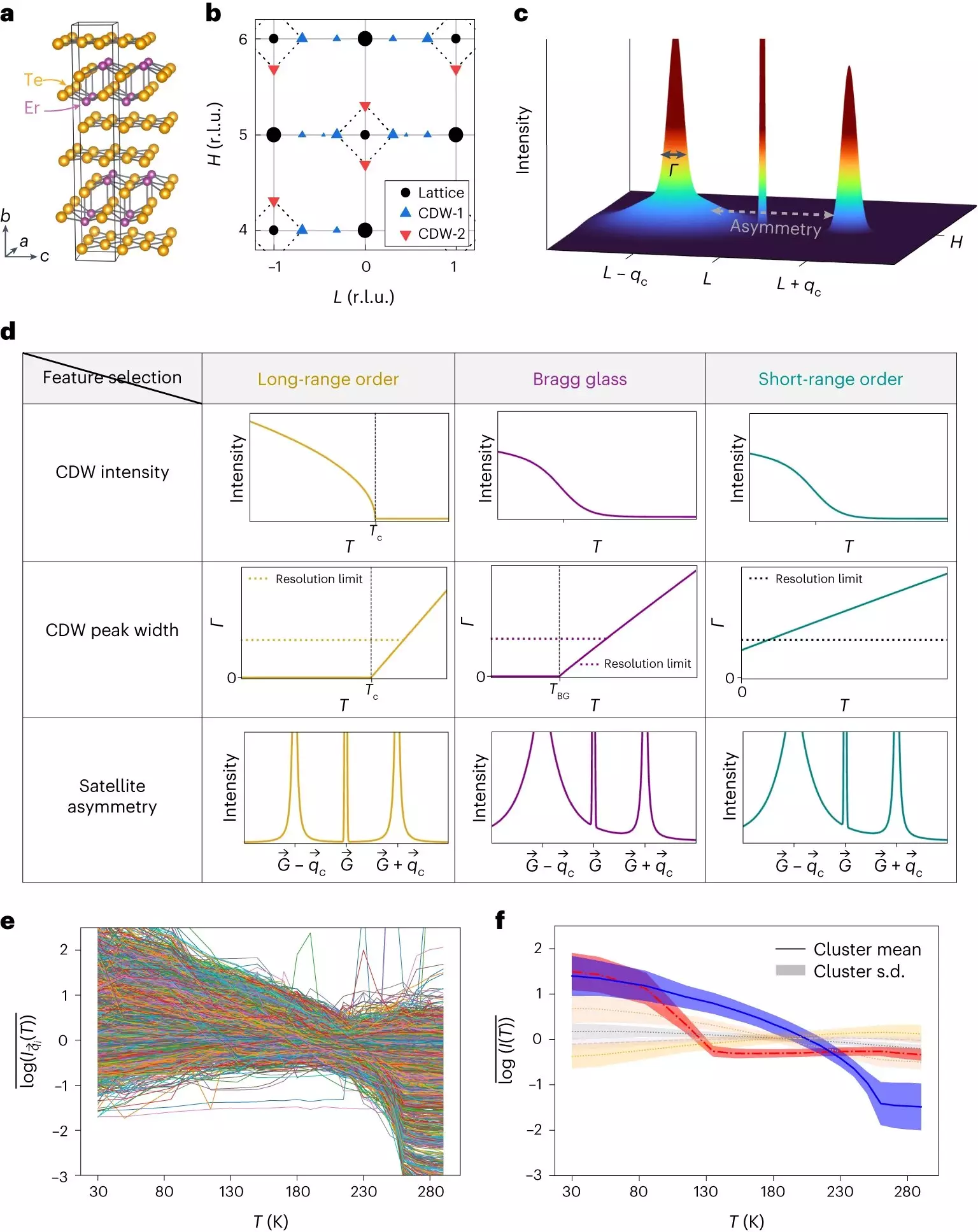Quantum researchers from Cornell University have made a groundbreaking discovery, successfully detecting the elusive Bragg glass phase using advanced data analysis techniques and large volumes of X-ray data. The research, titled “Bragg glass signatures in PdxErTe3 with X-ray diffraction Temperature Clustering (X-TEC),” was published in the prestigious journal Nature Physics. Led by postdoctoral researcher Krishnanand Madhukar Mallayya, and with the corresponding author as Professor Eun-Ah Kim, this collaborative effort also involved scientists from Argonne National Laboratory and Stanford University. This article delves into the significance of this discovery and the novel approach that enabled its detection.
The Bragg glass phase, a quasi-ordered state of matter, has long been a subject of scientific inquiry. The crucial question was whether this particular phase could truly exist in real materials. According to Mallayya, the lead author of the research, experimental evidence supporting the existence of the Bragg glass phase had been absent, despite theoretical predictions dating back three decades. This discovery, therefore, represents a major breakthrough in the field of quantum research.
The Distinctions of Phases
To understand the significance of this discovery, it is essential to grasp the distinctions between the three phases: long-range order, Bragg glass, and disordered state. In the disordered state, the charge density wave (CDW) correlation decays within a specific distance. Conversely, in the long-range ordered state, the CDW correlation continues infinitely. The Bragg glass phase, as explained by Kim, professor of physics, falls in between these two. The CDW correlation within the Bragg glass phase decays at an extremely slow rate, only disappearing at infinite distances.
Overcoming Challenges
The detection of these distinctions, which are crucial to confirming the existence of the Bragg glass phase, presented several challenges. Real-world factors like noise and finite resolution of experimental setups could complicate the analysis of experimental data. The researchers, however, successfully overcame these challenges through a combination of strategic material selection, data collection, and machine learning tools.
Collaborating with scientists from Stanford University, the Cornell researchers identified a family of CDW materials known as PdxErTe3. This selection allowed for a systematic study of the material with controlled variables, facilitating the experiment. To obtain comprehensive data, the researchers collaborated with scientists from Argonne National Laboratory, where they collected massive amounts of data through X-ray scattering.
Machine Learning and Data Analysis
To analyze the vast volume of data collected, the researchers employed a novel machine learning data analysis tool called X-ray Temperature Clustering (X-TEC). This scalable and automated approach enabled a comprehensive analysis of the experimental data, overcoming the challenges presented by noise and limited resolution. The successful detection of the Bragg glass phase through X-ray diffraction has laid to rest the open question surrounding the fate of CDW order in the presence of external factors such as dirt.
A New Mode of Research in the Age of Data
Beyond the specific scientific problem, the researchers believe that their research signifies a new mode of inquiry in the era of big data. By employing machine learning tools and adopting data-scientific perspectives, scientists can tackle complex questions and identify subtle signatures through comprehensive data analysis. This breakthrough in the detection of the Bragg glass order and the resulting phase diagram enhances our understanding of the intricate interplay between disorder and fluctuations.
Moreover, the use of X-TEC to target fluctuations through a high-throughput measure of “peak spread” has the potential to revolutionize how fluctuations are studied in scattering experiments. By providing a more efficient and accurate means of studying fluctuations, this breakthrough opens up new avenues for research in the field of quantum physics.
The detection of the Bragg glass phase by Cornell quantum researchers marks a significant milestone in the study of quantum materials. This breakthrough not only settles a long-standing question but also highlights the power of interdisciplinary collaboration and the potential of machine learning in data analysis. The findings of this research provide new insights into the complex nature of matter and the interplay between disorder and fluctuations. With the newfound ability to detect the Bragg glass phase, scientists can further explore its properties and implications, pushing the boundaries of our understanding of quantum physics.


Leave a Reply